Lord Rama’s epic journey from Ayodhya to Lanka is well known as Sri Ram Van Gaman Path or the ‘forest route path’. Fourteen years of exile is a fairly long time that necessitated a forest diet based on foraging tubers, fruits and berries. After the Nishadraj/Kewat episode and crossing the river Ganga at Sringverpur, Lord Rama, Sita and Lakshman journeyed on foot to the sacred confluence of the Ganga, Yamuna and Saraswati rivers at Triveni Sangam in present day Prayagraj. Here, they met Sage Bharadwaj who advised them to go to Chitrakoot. They crossed the river Yamuna on a raft and walked for two days to reach Chitrakoot, where they spent eleven of their fourteen years of exile.
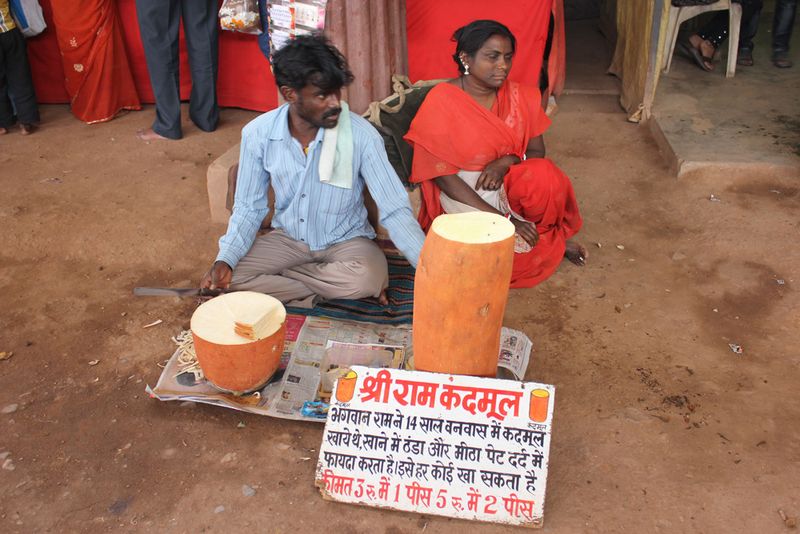
The Ramayana cites Lord Rama subsisted on simple foods like kand mool, tubers that are also known as ‘Ram kand mool’ or just Ram kand. Shaped like an elephant’s foot, the drum-like tuber is usually served as thin slices that are eaten raw, often seasoned with lime, salt and chilli powder, honey or jaggery. Believed to be the flowering stalk of the century plant or Sisal (Agave Sisalana), it is cool and mildly sweet in taste. Rich in starch, it satiates one’s thirst, provides nourishment and cools the body. Ram kand grows in hilly, forested tracts near water sources and is available across India from Haridwar to Chhattisgarh and Pune to Bangalore. In Karnataka, it’s called Bhoochakra gadda (Maerua Oblongifolia).
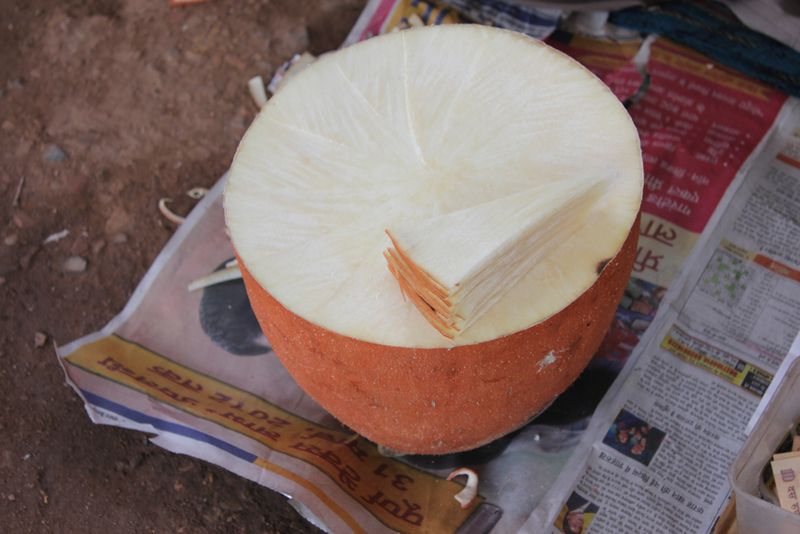
Its availability corresponds to Lord Rama’s forest itinerary from Ayodhya to Lanka, as outlined in the Aranya Kand of the Ramayana. At Chitrakoot, Lord Rama visited Sage Atri’s ashram where Mata Anasuyya gifted Sita precious ornaments and clothes that would never soil. The trio travelled from one ashram to another, meeting sages such as Sarbhanga rishi (his ashram is near present day Satna) and Sage Agastya’s disciple, Suteekshan. Lord Rama followed the course of rivers, passing through various ashrams of sages including Lomash, Angira, Kanaka, Pulastya and Mandavya. Exploring the large Dandakaranya forest that once stretched over Central India, they consumed mostly wild fruits and forest produce.
In a remote corner of northern Chhattisgarh, there’s a cave called Sita Bengra in the Ramgarh Hills where Sita was kept for safekeeping while the brothers fought demons. Local legends say that the clefts in the rock are believed to be Lakshman rekha, the lines of fire drawn by Lakshman to protect her. The cave is also touted as the oldest natyashala (amphitheatre) excavated in India, where Sanskrit poet and playwright Kalidasa supposedly composed his play ‘Meghadootam’ or The Cloud Messenger. Of the 75 places associated with the Ramayana trail in Chhattisgarh, nine are being developed into major tourist destinations.
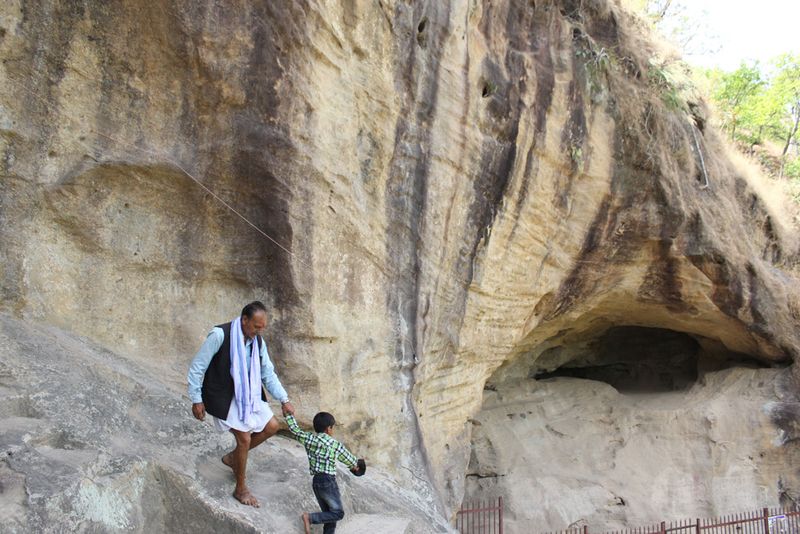
Another food closely associated with Lord Rama is the amaranth (Amaranthus hypochondriacus), commonly called chaulai or kingseed. It is also known across North India as ramdana or ‘the seed gifted by Lord Rama’. In Central India, it is recognised as rajgira or ‘royal grain’, a seed given by the divine king, Lord Rama. It can be consumed in many forms – ramdana roti, chaulai ka saag, chaulai ka raita, ramdana kheer, ramdana halwa, ramdana laddu or ramdana chikki!
However, ramdana is not considered a grain but a non-cereal, which allows it to be eaten as phalahaar or a fruit diet during fasts. Popped amaranth grain soaked in milk is one of the food items eaten during religious festivals to break a long fast. Popped amaranth seed is used to make ramdana laddus, regarded as pure food, fit to be offered to the gods. The root of the Amaranth is also of great value. Called ratanjot or cockscomb, it imparts the attractive red hue to curries like the Kashmiri delicacy rogan josh.
On reaching Sage Agastya’s ashram, Lord Rama saw a heap of bones of sages who had been devoured by demons or rakshasas and vowed that he would rid the earth of their vile race. The hill was named Ramgiri and the place near Nagpur was called Ramtek after Rama’s oath (tek means ‘promise’). Sage Agastya sent Lord Rama to Panchavati, the ‘place of five large banyan trees’. From Banganga in Mumbai to Honnavar tirtha near Gokarna, and across India, one will discover numerous places where Lord Rama is believed to have shot an arrow to create a spring of water to quench Sita’s thirst… Even today, any effective panacea or a cure is still called Ram-baan, as sure as ‘Rama’s arrow’.
It was at Parnakuti, ‘the hut bedecked with leaves’, that the Soorpanakha episode took place. To spite her advances, Lakshman cut off her nasika (nose), an event that gave Nashik its name. After Lord Rama and Lakshman killed her brothers Khara and Dooshana, a distraught Soorpanakha went to Ravana, the demon king of Lanka and beseeched him to avenge her disgrace. Using his shape-shifting brother Maricha as a golden deer to lure the brothers away, Ravana disguised himself as a mendicant and abducted Sita, whisking her away in his aerial chariot, the Pushpaka Vimana.
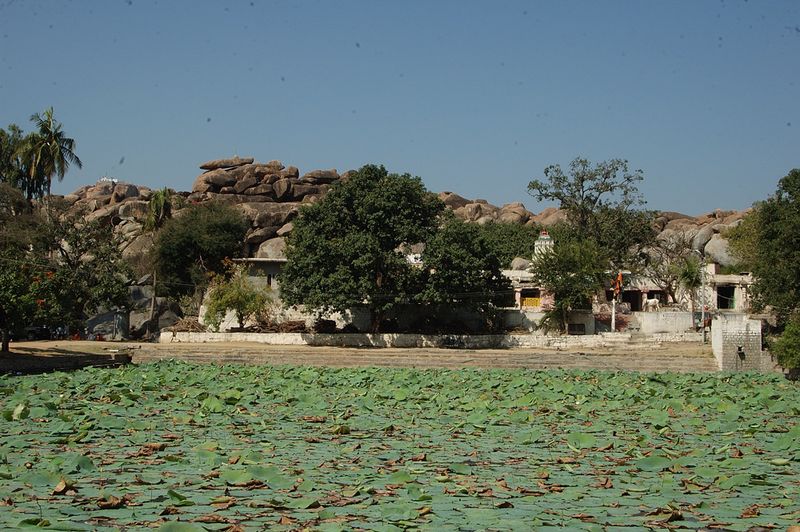
It was Mata Anusuyya’s ornaments that Sita flung off the chariot that left a cookie trail of clues of the possible direction of her journey. Some were collected by the monkeys and hidden in a cave. When Lord Rama and Lakshman crossed the Krauncha forest in search of Sita, they encountered the demon, Kabandha. When they killed him, they realised his true identity as a cursed Gandharva, who directed them to meet Sugreeva, the exiled monkey king of Kishkindha. The brothers reached Kishkindha and Pampa Sarovar at present day Anegundi on the north bank of Tungabhadra.
Here, they met Shabari, an old ascetic woman, who was the daughter of a nishad (hunter). Story goes that a young Shabari ran away from her home when she saw goats and sheep to be sacrificed for her wedding feast the following day. Her compassion for the lives of those animals prompted her to leave home and stop the slaughter. On reaching the ashram of Sage Matanga, she chose him as her guru, much to the chagrin of others who considered her as a low caste. When Sage Matanga was about to attain samadhi, Shabari begged him to take her along, but he told her that she must wait for Lord Rama.
For years, she patiently waited for the divine god to reach her doorstep and every day, she would set off to the forest to collect wild berries of the Indian jujube tree, known as badari or ber to welcome him. She would pick only the sweetest berries after tasting them and carefully place them in a leaf dona (container) that she wove with ber leaves. Lakshman was incensed at her naiveté in offering berries she had already tasted, but Rama praised her devotion and said that these were sweetest berries he had ever had. He blessed her, granted salvation and ordained that the ber tree would henceforth grow leaves that were bowl-shaped. ‘Shabari ke ber’ thus become an example of utmost devotion. Shabari’s gufa is a little cave near Pampa Sarovar with a dhuni (sacrificial pit) and foot imprints of Rama and Lakshmana.

It was Shabari who directed Lord Rama to Rishyamook Parvat, where he meets Hanuman. The banished monkey king Sugreeva had sought refuge on the mountain to hide from his powerful brother Vali. In the fight between Dundhubi the demon, and Vali, the latter kills him and victoriously flings the demon’s bloodied bits, which unfortunately land at Matanga rishi’s ashram. Incensed at this sacrilege, the sage curses Vali that if ever he set foot on the mountain, his head would be blown into a thousand pieces. Lord Rama overcame Vali and with the help of Sugreeva’s vanara sena (monkey army), marched towards Lanka to rescue Sita.
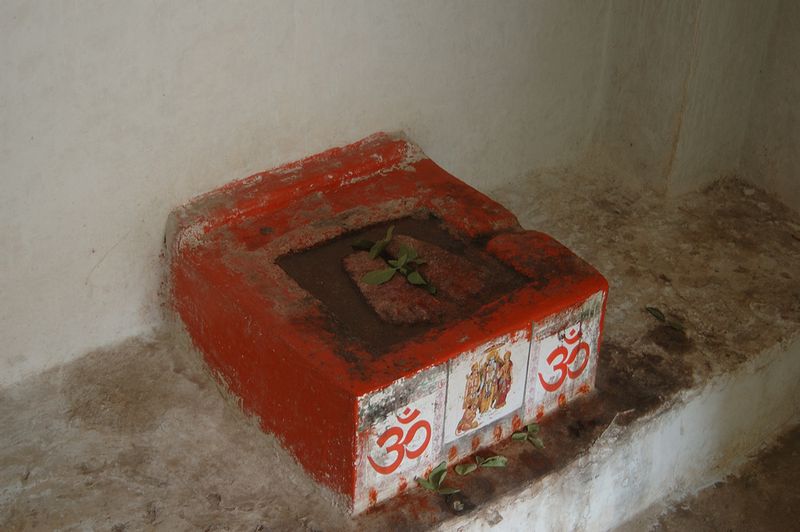
As Rama reached the seashore, the waves were tempestuous. Rama shaped a Shiva lingam out of sand and worshipped it – the place was named Rameshwaram, and the lingam/temple was called Ramanathaswamy. For three days, he fasted and meditated, praying to Varuna, the God of the sea, to appear and give him a safe passage to Lanka. On the fourth day, angered by Varuna’s unresponsiveness, Lord Rama shot deadly arrows into the sea and threatened to use his most terrible weapon, the Brahmastra, to dry up the ocean floor to create a path. Varuna promptly appeared and offered to calm his waters. But since Lord Rama had already drawn his arrow, he could not take it back. So, he was directed to shoot it at the far western edge of Aryavarta, a region supposedly inhabited by demons. When the Brahmastra fell, it destroyed the rakshasas and scorched the earth, resulting in the barren arid landscape of present-day Rajasthan.
Nala-Nila, the twin vanara architects, figured out a way to make a bridge to Lanka with stones inscribed with Rama’s name that magically floated when thrown into the sea. Perhaps these buoyant stones were spongy coral. But Rama was worried that the rocks flung into the sea would hurt the marine creatures. He requests them to give way for the Rama Setu (Ram’s bridge) to be constructed. It is believed that all the creatures of the sea obeyed, except the bombil (bummelo). For all the spine the fish showed, Lord Rama picked it up, twisted its back and flung it to the west, where it landed off the coast of Mumbai. The legend is often quoted to explain why, even to this day, the bombil or Bombay duck has soft bones!
Most people know that the custard apple is called Sitaphal in India. But did you know that besides Sitaphal (Annona squamosa), all the species of the Annona fruit have a Ramayana connection and are named Ramphal (Annona Reticulata) or bullock’s heart, Lakshmanphal (Annona muricata) and Hanumanphal (Annona cherimola) or soursop? As per the Aranya Kand of Ramayana, Ramphal sprang up from Lord Rama’s sweat. On eating the fruit, a delighted Sita named it Ramphal. After Lord Rama vanquished Ravana, he travelled to Rishikesh to atone the killing of a Brahmin. That’s when he first tasted the fruit that is immortalised as Ramphal. The fruiting season between March and May coincides with Ramnavami in April, when it is ritually offered.

On their triumphant return from Lanka to Ayodhya, Lord Rama and his entourage stopped at the ashram of Sage Gautama, who offers them dishes made from navadhanya (nine grains). After the meal, Rama asked Hanuman which grain was superlative. Hanuman demurred and said everything was good and only a closer examination might yield a winner. Sage Gautama brought out all the grains and adjudged that ragi was most superior. Rice or akshata believed it was superlative since it was a holy offering at pujas and yagnas. It heaped scorn upon the kula-heena (low born) ragi. Lord Rama ordered that both be imprisoned as a test of endurance. After six months, when both the grains were presented at the court in Ayodhya, the rice had gone stale but ragi remained fresh. Lord Indra adjudged ragi as the winner!
The fascinating poem Rama Dhanya Charitre by 16th century poet Kanakadasa about the dispute between a grain of rice and ragi was a powerful metaphor for the prevalent class struggle between the rich and the poor, and the grains that they ate. Born into a kuruba (shepherd) family, Kanakadasa himself had faced discrimination when he was stopped from entering Lord Krishna’s shrine at Udupi. As he stood praying behind the temple, it is said that the idol turned to face the great devotee. Krishna caused an earthquake that cracked the wall and allowed Kanakadasa a darshan of the lord himself. The crack was made into a proper window called Kanakana Kindi (Kanakadasa’s window). To this day, people believe that a darshan is incomplete without first peeping at the idol through the window.
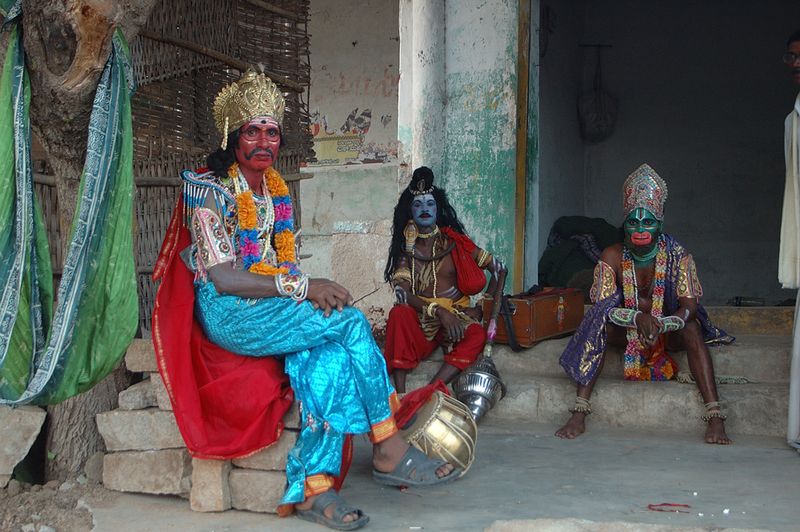
As Lord Rama, Lakshmana and Sita returned to Ayodhya, it was a homecoming like no other. People lit lamps (deepas) and shared sweets to welcome them in a festival celebrated as Deepavali, the victory of good over evil. Rama’s fair reign ushered a golden era called ‘Rama rajya’. Be it Sankranti, Pongal or Chhath, sugarcane and sweets prepared by jaggery play an important part in Indian festivals. Is it divine coincidence that Lord Rama traces his lineage to the Suryavanshi Ikshvaku dynasty – his ancestor was the first to cultivate sugarcane and produce jaggery out of it; ikshu in Sanskrit means sugarcane!


_1705404873361_thumb_1200.jpeg?w=3840&q=75)